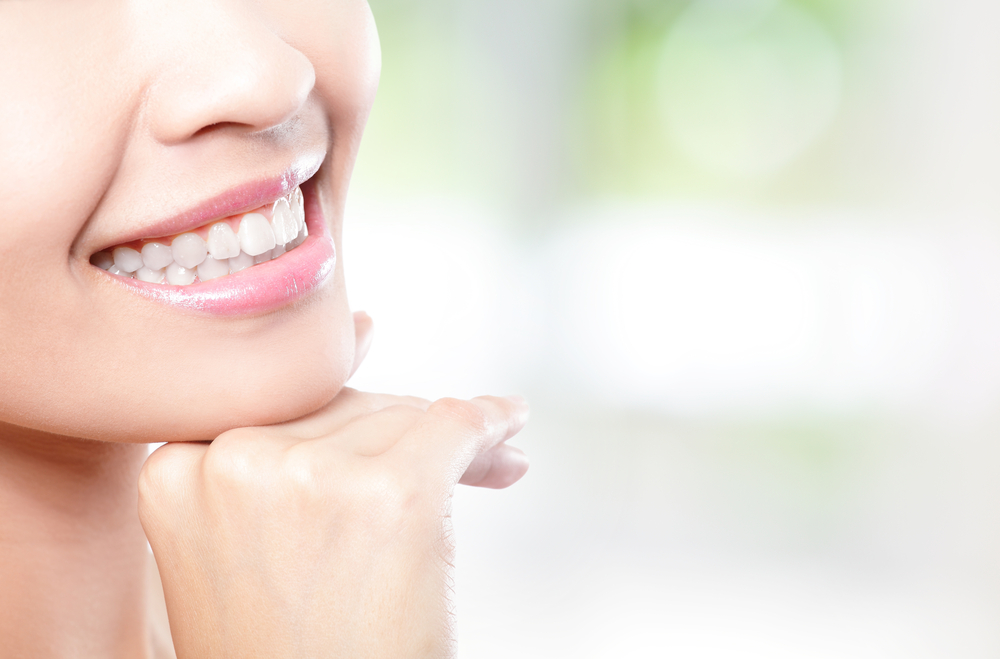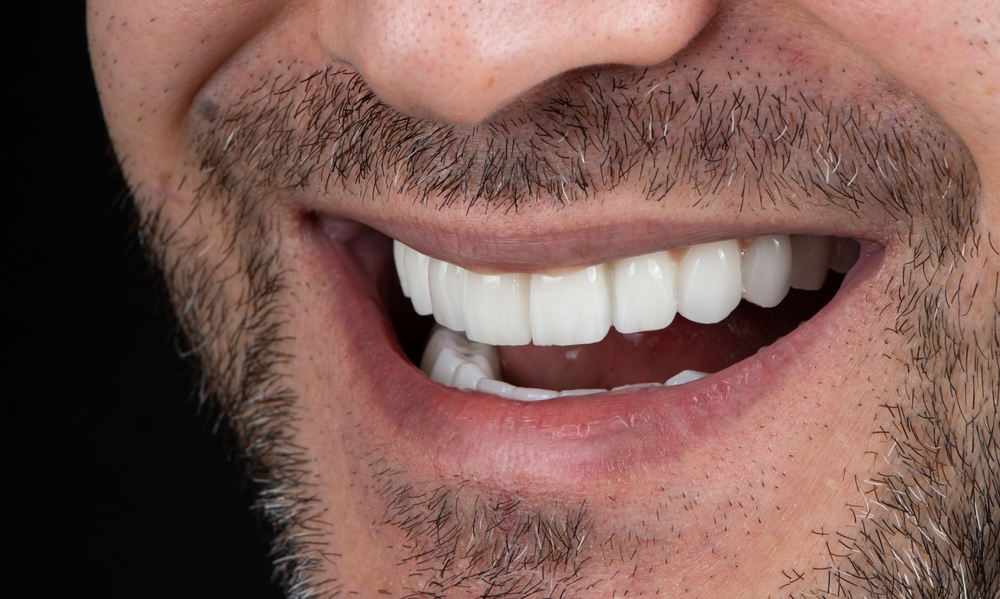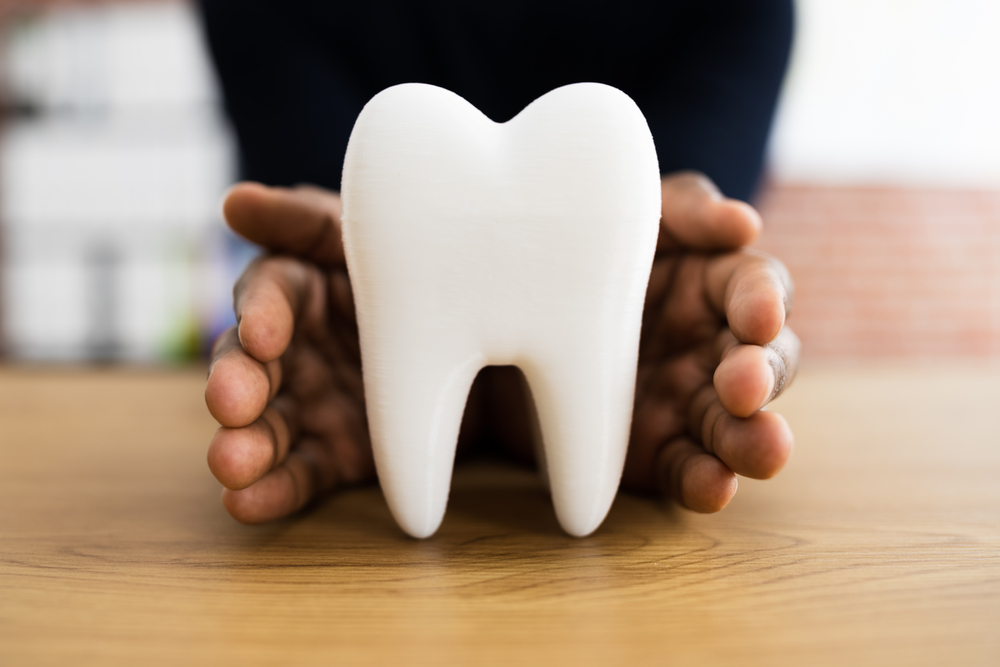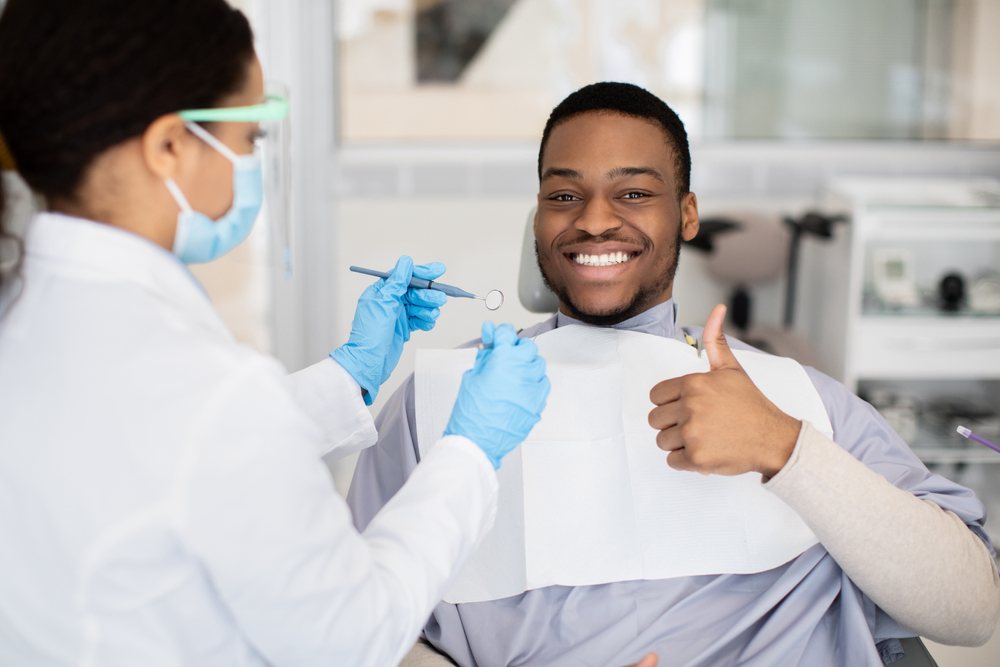Tag: teeth whitening litchfield
What to Expect with Teeth Whitening in Litchfield MN
Teeth whitening, or simply bleaching, is a straightforward, non-invasive dental solution for changing the color of natural tooth enamel, and to enhance the appearance of your smile.
Getting whiter teeth is considered the most popular esthetic concern for most dental patients. Common reasons for teeth whitening include:
- Normal wear of tooth enamel
- Excess fluoridation (fluorosis) during early tooth development
- Stained teeth due to smoking or medications like tetracycline
- Brown or yellow stained teeth
Generally, any patient above the age of 10 years can consider teeth whitening to enhance their smile and boost confidence. However, it is not recommended for patients with oral issues such as dental cracks, leaky fillings, or dental decay, because the whitening products may irritate the tooth nerve, resulting in discomfort or more damage. In addition, patients with short teeth or a gummy smile may not necessarily look better after bleaching because whiter teeth tend to accentuate a gummy smile.
Your Consultation
Before you decide to whiten your teeth, it is important that you get a proper dental examination that includes X-rays to help establish the cause of tooth discoloration. In some cases, staining can be an indication of dental disease that requires a different treatment. But for simple whitening, options include bleaching from inside the tooth, for a dead tooth that has root canal, or a single-tooth bleaching tray for a living tooth.Once the cause and extent of discoloration and staining is known, you and your dentist can explore the different whitening options that apply to your case.
Teeth usually don’t get discolored uniformly. So your dentist will come up with an appropriate strategy to whiten each tooth sufficiently to give you a uniform smile. This means that you can also choose to whiten only one or two teeth, or more.
Final Note
Restorations like tooth-colored fillings, veneers, bonding, bridges, and crowns do not stain or lighten. So, bleaching has no effect on existing dental restorations. As such, you may need to replace pre-existing dental work to match the new tooth shade achieved in your natural teeth following whitening.
Please visit your dentist to learn more about teeth whitening.
Types of Professional Teeth Whitening Options in Litchfield MN
People can tell a lot from the shade of your teeth, including your age, state of oral health, and even your good and bad habits. And since everyone wants to look young and well groomed, teeth whitening has become one of the most popular cosmetic procedures in dentistry.
Advancements in teeth cleaning technologies have made the treatment more comfortable, predictable, long-lasting, and affordable for all people. Although there are many effective ways to whiten your teeth, they vary depending on the treatment time and frequency, type of stain that can be removed, and the level of whitening that can be achieved.
Some of the teeth whitening options available include:
Professionally applied bleaching:
With in office tooth whitening, the dentist applies a low concentration of hydrogen peroxide (bleach) to the surface of your teeth using trays that fit snugly around your top and bottom teeth. After the in-office treatment, your dentist may give you some hydrogen peroxide gel and custom-made trays to continue your treatment at home for a specific period of time to maximize the teeth bleaching results
Dentist-prescribed treatment:
Your dentist will give you a custom-made whitening kit for home use. This kit includes custom-made trays and some hydrogen peroxide gel. Teeth whitening at home is a gradual process that usually takes at least two weeks.
Which is the best option?
It’s best to consult a dentist for a thorough examination of your teeth so your treatment can be tailored to your unique needs. During your first appointment for professional teeth cleaning, your dentist will examine your teeth carefully, review your oral health history, and then determine whether bleaching is right for you. Please visit your dentist today to discuss your teeth whitening goals and smile concerns.
Common Questions: Teeth Whitening Treatment in Litchfield MN
If you want to get your teeth whitened, it’s important that you research the right dentist and dental practice. The procedure is safe and effective when done by an experienced dentist during the first visit and supervised by a dentist for subsequent treatments. Yet, before you get your tooth whitening procedure done, it is important that you visit a dentist for an examination and diagnosis to ensure you are a good candidate.
Here are some questions to help you choose the right dentist:
Can teeth cleaning and polishing make my teeth whiter without bleaching?
Professional teeth-cleaning and polishing is done to remove tartar that’s caused by drinks like tea and red wine, tobacco products, foods, and more. However, this will not change the color of stained or yellowing teeth. Teeth cleaning can help you remove deep stains and discoloration that won’t go away with routine cleaning and polishing.
What is in-office teeth whitening?
The dentist applies a bleaching product (usually hydrogen peroxide) on the surface of your teeth using trays that fit snugly on your teeth. The tray sits in place for a short period of time to break down the agent, resulting in an oxygen compound that penetrates tooth enamel.
Will I achieve the results I want?
Yes. Most cases of tooth whitening are successful. That said, the treatments work differently depending on the extent of discoloration or staining at the start of the procedure. Your dentist will discuss your treatment plan with you and inform you of the best ways to whiten your teeth, as well as any difficulties that may arise, and what the expected results are.
Can teeth whitening be done outside a dentist’s office?
It’s recommended that you consult a dentist to design your bleaching plan that can then be done in the office or at home with a customized teeth whitening kit. The best dentists will lay out your options, the expected time(s) for improvement, and the duration of treatment if you want to undergo dental whitening.
In which situations might tooth whitening be unsuccessful?
Tooth whitening only helps to improve the shade of your natural teeth. This means that it may not be successful when used on unhealthy teeth, teeth with exposed roots, or teeth that have been restored with fillings, crowns, veneers, or have received root treatments.
Please consult your dentist to discuss your bleaching plan and the expected results of your teeth whitening treatment.
When is Whitening Not Advisable? Litchfield MN
Your smile is your most distinct feature when interacting with people. But over time with aging, the use of tobacco products, drinking colored beverages like wine and coffee, using some spices, taking antibiotics like tetracycline, consuming excess fluoride in water, and other factors can cause your teeth to discolor or darken, affecting the appearance of your smile.
Fortunately, patients above the age of 10 years can consider the different methods of teeth whitening for their permanent teeth. Your dentist will determine whether your teeth are healthy enough to have a successful whitening procedure. There are some stains, such as those caused by tooth developmental conditions or medications that cannot be completely removed with whitening. Any dental restorations, including fillings and crowns, also do not respond to bleaching. To create uniformity in your smile, your dentist can recommend several alternatives or complementary teeth whitening options.
When is Whitening Not Advisable?
If your tooth enamel is damaged and you are already sensitive to cold and hot foods and drinks, then bleaching or any other whitening procedure may aggravate your sensitivity. That said, there are lower strength whitening treatments that can be recommended to people with worn/eroded enamel or tooth sensitivity. The treatments can also be used less frequently to reduce sensitivity. In addition, your dentist can recommend a way to reduce sensitivity after the whitening procedure.
Keep in mind that, there are many different whitening options for different teeth requirements, including those with very thin enamel. It is essential that you follow your dentist’s instructions for your specific treatment.
Final Note
Although teeth whitening leaves your teeth looking impeccably white, the longevity of the results will depend on your diet and habits. The amount of time that you can enjoy your sparkling smile depends on multiple factors. If you drink tea, coffee, wine, or use tobacco products, your teeth will stain again sooner, and you will need more subsequent whitening procedures.
Please contact your dentist to discuss ways to improve your smile with teeth whitening.
Teeth Whitening Near Me, Litchfield MN
Your smile is your most distinct feature when interacting with people. But over time with aging, the use of tobacco products, drinking colored beverages like wine and coffee, using some spices, taking antibiotics like tetracycline, consuming excess fluoride in water, and other factors can cause your teeth to discolor or darken, affecting the appearance of your smile.
Fortunately, patients above the age of 10 years can consider the different methods of teeth whitening for their permanent teeth. Your dentist will determine whether your teeth are healthy enough to have a successful whitening procedure. There are some stains, such as those caused by tooth developmental conditions or medications that cannot be completely removed with whitening. Any dental restorations, including fillings and crowns, also do not respond to bleaching. To create uniformity in your smile, your dentist can recommend several alternatives or complementary teeth whitening options.
When is Whitening Not Advisable?
If your tooth enamel is damaged and you are already sensitive to cold and hot foods and drinks, then bleaching or any other whitening procedure may aggravate your sensitivity. That said, there are lower strength whitening treatments that can be recommended to people with worn/eroded enamel or tooth sensitivity. The treatments can also be used less frequently to reduce sensitivity. In addition, your dentist can recommend a way to reduce sensitivity after the whitening procedure.
Keep in mind that, there are many different whitening options for different teeth requirements, including those with very thin enamel. It is essential that you follow your dentist’s instructions for your specific treatment.
Final Note
Although teeth whitening leaves your teeth looking impeccably white, the longevity of the results will depend on your diet and habits. The amount of time that you can enjoy your sparkling smile depends on multiple factors. If you drink tea, coffee, wine, or use tobacco products, your teeth will stain again sooner, and you will need more subsequent whitening procedures.
Please contact your dentist to discuss ways to improve your smile with teeth whitening.
Common Questions – Professional Teeth Whitening in Litchfield MN
The aging process, your diet, and other lifestyle choices can discolor your teeth over time. Whiter teeth are associated with beauty, success, and good health. They also draw attention away from other features, giving you a more youthful and vibrant appearance.
Teeth whitening provides a fast and cost-effective way to get the smile of your dreams. It involves removing stains and discoloration to brighten your teeth and improve their appearance.
Why Do Your Teeth Change Color?
There are many reasons why few people have impeccably white teeth, including:
- Age – tooth enamel is naturally white, but it thins over time due to normal wear, allowing the yellowish dentin to show
- Fluorosis – teeth darkening due to excessive fluoride consumption
- Food and drink – tea, coffee, red wine, and other food items contain intense color pigments known as chromogens that bond to tooth enamel, causing discoloration
- Tobacco use – chewing and smoking tobacco exposes you to two chemicals responsible for creating stubborn stains: nicotine and tar
- Illness – early tooth decay or illness during tooth development can also cause spots on your teeth
- Medications – tooth discoloration can be a side effect of taking certain medications, like antihistamines and antipsychotics. Fetuses and babies may also be at risk of tooth discoloration of the adult teeth if exposed to antibiotics like doxycycline and tetracycline.
- Calculus – accumulated plaque can also reduce the sparkle of your teeth
Any of these reasons can lead you to find a dentist near you for teeth whitening.
Final Note
Please keep in mind that teeth whitening is a cosmetic procedure that may help to improve your self-confidence, but to maintain the results for as long as possible, you must be prepared to uphold your dental hygiene by brushing and flossing properly, avoiding smoking, avoiding colored drinks that stain your teeth, drinking plenty of water, and getting professional cleaning twice a year.
Please schedule a consultation with your dentist to learn more about teeth whitening and other ways you can improve your smile.
What to Expect with Teeth Whitening in Litchfield MN
Proper brushing and flossing every day can help to keep your smile bright and breath fresh. Factors such as aging, consuming colored foods and drinks, and lifestyle habits such as chewing or smoking tobacco products can cause your teeth to discolor and get darker.
Fortunately, there are several options for teeth whitening to help improve the shade of your teeth and maintain the shade with follow up treatments as recommended by the dentist. Before treatment, the dentist will examine your teeth to establish the cause and severity of the discoloration, and then propose various whitening options that will be most suitable for your case to ensure that you get the desired results and the smile of your teeth. The results may fade with time depending on your diet, age, and lifestyle choices, so subsequent treatments may be necessary to maintain a white smile.
Good Candidates for Teeth Whitening
Teeth whitening is most effective on surface stains, and while anyone from the age of 10 years and above can be a good candidate for bleaching, there are a few cases when your dentist may prevent you from proceeding with the treatment. These include:
- Tooth and gum sensitivity – Sensitivities may disqualify you from using certain whitening techniques
- The natural color of your teeth – Intrinsic stains are harder to bleach compared to extrinsic stains
- The presence of crowns, fillings, bridges, or veneers – These do not bleach the same as natural teeth, which means that you may have to replace them after whitening your teeth to achieve a uniform look
- Exposed roots – These surfaces are harder to whiten effectively compared to tooth enamel, which means that you may have to consider alternative methods.
Your dentist will assess your teeth and mouth during your first visit to determine your suitability.
Final Note
Teeth whitening is not permanent, and people who expose their teeth to tobacco products and colored foods and beverages that cause staining may realize faster fading of the results. The more you exercise proper oral hygiene after bleaching, the longer you will stay without requiring touch-up whitening treatment.
Please contact your dentist to discuss ways to improve your smile with teeth whitening.
Professional Teeth Whitening Treatment in Litchfield MN
Everybody desires a beautiful smile. This not only refers to having the perfect shape and size of teeth that makes your smile appear beautiful and healthy, but also the color. If you’re planning to bleach your teeth, then you need to choose from a range of tooth whitening options that include:
- Professionally applied bleaching – performed in the dental office
- Dentist-prescribed treatment – a custom-made whitening kit for home use
- Over-the-counter treatments – using consumer products purchased at a store without a prescription, such as toothpastes, rinses, gels, and so on
In-office professional teeth whitening
During your first appointment for professional teeth cleaning, your dentist will examine your teeth carefully, review your oral health history, and then determine whether bleaching is right for you. As with any other treatment, your teeth whitening procedure must be customized to your unique needs.
With in office tooth whitening, the dentist applies a low concentration of hydrogen peroxide (bleach) to the surface of your teeth using trays that fit snugly around your top and bottom teeth. It’s important to note that teeth whitening is a gradual process that usually takes at least two weeks. So after the in-office treatment, our team member will give you some hydrogen peroxide gel and custom-made trays to continue your treatment at home for a specific period of time to maximize the teeth bleaching results.
For faster results, your dentist may recommend laser bleaching. This approach involves applying a bleaching product to the teeth, and then shining a laser on the teeth to activate the bleach and speed up the whitening process. This technology can make your teeth several shades lighter.
Visit your dentist today
Keep in mind that there’s no “one size fits all” when it comes to teeth whitening. Your treatment must be tailored to your needs. Please visit your dentist today to discuss your teeth whitening goals and smile concerns in order to design a plan that suits your needs.
5 Questions to Consider Before Scheduling your Teeth Whitening Treatment | Litchfield MN
If you’re planning to get your teeth whitened, it’s important that you do your research to find the right dentist and dental practice. The bleaching procedure is generally safe and effective when done by a dentist during the first visit, and under a dentist’s supervision for subsequent treatments. That said, everyone should first visit a dentist for a thorough examination and diagnosis to ensure you’re a good candidate for a safe, brighter, whiter smile.
Here are some questions to help you choose the right dentist:
Can teeth cleaning and polishing brighten my teeth without bleaching?
Professional teeth cleaning and polishing is done in order to remove calculus and surface stains caused by colored drinks like tea and red wine, tobacco products, foods, and so on. However, this will not change the color of stained or yellowing teeth. Teeth cleaning can help you remove deep stains and discoloration that won’t go away with routine cleaning and polishing.
How is in-office teeth whitening done?
The dentist applies a bleaching product (usually hydrogen peroxide) on the surface of your teeth using trays that fit snugly on your teeth. The trays stay in place for a short period of time to break down the agent into oxygen, which then penetrates tooth enamel to change the shade of your teeth.
Will I achieve the results I want?
Yes. Most cases of tooth whitening are successful. That said, the treatments work differently depending on the extent of discoloration or staining at the start of the procedure. Fortunately, your dentist will discuss with you about your treatment plan and inform you beforehand about the best way to whiten your teeth, any difficulties, and even the expected results.
Can teeth whitening be done outside a dentist’s office?
It’s recommended that you consult a dentist to design your bleaching plan that can then be done in the office or at home with a customized teeth whitening kit. This is important because dentists are trained to choose the best treatment plan for your case; estimate the improvement in shade that you will achieve; and inform you how long your treatment will last.
In which situations might tooth whitening be unsuccessful?
Tooth whitening only helps to improve the shade of your natural teeth. This means that it may not be successful when used on unhealthy teeth, teeth with exposed roots, or teeth that have been restored with fillings, crowns, veneers, or have received root treatments.
Please consult your dentist to discuss your bleaching plan and the expected results of your teeth whitening treatment.
FAQs – In-Office Teeth Whitening in Litchfield MN
White teeth are associated with beauty, increased confidence, and a healthy lifestyle. However, smoking and chewing tobacco, drinking black tea or coffee and wine, using medications such as tetracycline, swallowing too much fluoride, and aging can cause your teeth to become stained.
Teeth whitening or bleaching involves the use of simple and non-invasive treatments designed to change the color of your natural tooth enamel to give you a dazzling smile. Having white teeth is the leading aesthetic concern for most dental patients. Fortunately, there are multiple ways – including home and in-office – to whiten teeth, with varying degrees of effectiveness.
Reasons to Consider Teeth Whitening
Some of the reasons why people consider teeth whitening include:
- To improve their smile
- To increase their confidence
- To prevent discoloration from worsening
Teeth whitening can be used to stop the progression of tooth discoloration, especially in combination with lifestyle adjustments
Since improving your smile is an investment, the last thing you want to see are signs of discoloration on your pearly whites coming up only a few months after treatment. To maintain your newly achieved bright smile, you should:
- Avoid stain-causing foods and drinks – Many colored foods and drinks can stain your white teeth. So, reduce or avoid your intake of tomatoes, berries, grape juice, red wine, coffee, tea, sports drinks, cola, and grape juice.
- Rinse your mouth with water after eating and drinking – Every time you indulge in items that can stain your mouth, it is important that you rinse your mouth with clean water right after. Swishing a little water after eating or drinking can help reduce staining.
- Stop smoking – Smoking is not only bad for your health, but also your teeth. The nicotine, tar, and tobacco in cigarettes, cigars, and pipes will stain your teeth.
- Practice proper oral hygiene – Daily brushing, at least every morning after breakfast and at night before bed, and daily flossing will help remove food debris and plaque, and keep your mouth clean and stain-free.
Final Note
Tooth bleaching only works for natural teeth, and the results don’t last forever. Artificial dental treatments, including crowns, fillings, and veneers are resistant to stains, which means that these won’t respond to the whitening agents. Moreover, you need a touch-up every year or sooner – as advised by your dentist – depending on your diet and lifestyle to maintain your bright smile
Please schedule your consultation today to discuss ways to improve your smile.
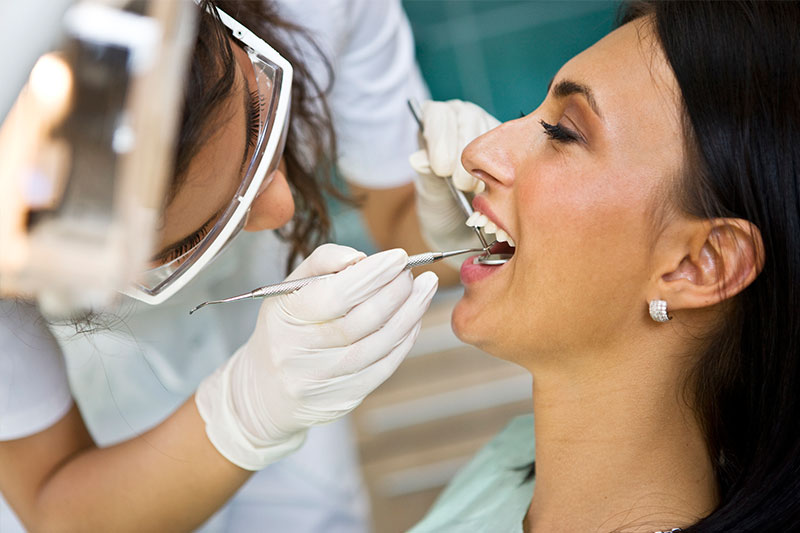
New Patient Exam Xrays and Regular Cleaning $67
Includes consultation, exam, and x-rays. In the absence of periodontal disease. New Patients Only
Make Appoinment
6 Month Smiles
Six Month Smiles is a short term orthodontic treatment that involves wearing clear braces to straighten and improve tooth alignment. This alternative treatment is a convenient approach to a straighter smile without the time commitment.
Learn more


